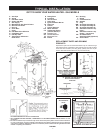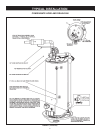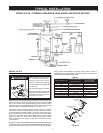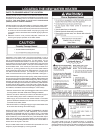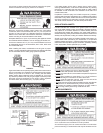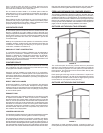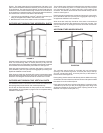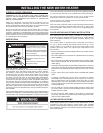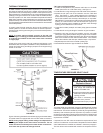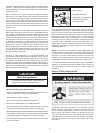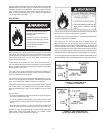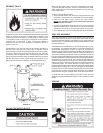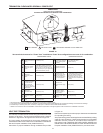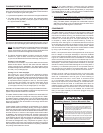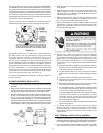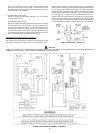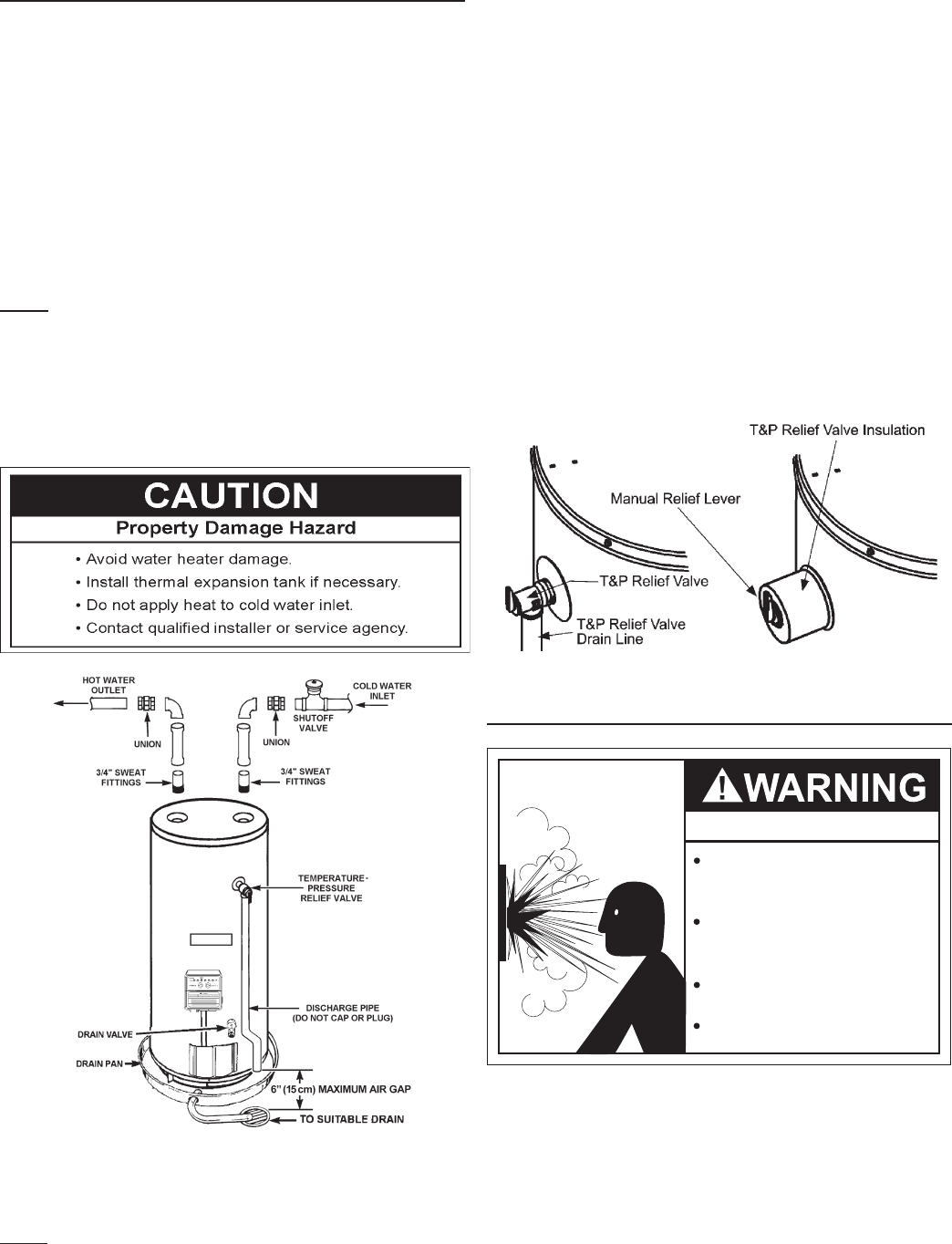
15
THERMAL EXPANSION
As water is heated, it expands (thermal expansion). In a closed system
the volume of water will grow when it is heated. As the volume of water
grows there will be a corresponding increase in water pressure due to
thermal expansion. Thermal expansion can cause premature tank failure
(leakage). This type of failure is not covered under the limited warranty.
Thermal expansion can also cause intermittent Temperature-Pressure
Relief Valve operation: water discharged from valve due to excessive
pressure build up. This condition is not covered under the limited warranty.
The Temperature-Pressure Relief Valve is not intended for constant relief
of thermal expansion.
A properly sized thermal expansion tank must be installed on all
closed systems to control the harmful effects of thermal expansion.
Contact a local plumbing service agency to have a thermal expansion
tank installed.
NOTE: To protect against untimely corrosion of hot and cold
water ttings, it is strongly recommended that di-electric unions
or couplings be installed on this water heater when connected
to copper pipe.
All gas piping must comply with local codes and ordinances or with
the Natural Gas and Propane Installation Code (CAN/CSA B149.1).
Copperandbrasstubingandttings(excepttinlinedcoppertubing)
should not be used.
FIGURE 10.
Figure 10 shows typical attachment of water piping to the water heater.
The water heater is equipped with 3/4 inch NPT water connections.
NOTE: If using copper tubing, solder tubing to an adapter before
attaching the adapter to the water heater connections. Do not
solder the water lines directly to the water heater connections.
It will harm the dip tube and damage the tank.
T & P Valve and Pipe Insulation
1. Locate the temperature and pressure relief valve on the water
heater (also known as a T&P relief valve). See Figure 11.
2. Locate the slit running the length of the T&P relief valve insulation.
3.Spread the slit open and t the insulation over the T&P relief
valve. See Figure 11. Apply gentle pressure to the insulation to
ensure that it is fully seated on the T&P Relief Valve. Once seated,
secure the insulation with duct tape, electrical tape, or equivalent.
IMPORTANT: The insulation and tape must not block the discharge
opening or hinder access to the manual relief lever (Figure 11).
Ensure a discharge pipe is installed into the T&P valve discharge
opening per the instructions in this manual.
4. Locate the hot water (outlet) & cold water (inlet) pipes to the water
heater.
5. Locate the slit running the length of a section of pipe insulation.
6. Spread the slit open and slip the insulation over the cold water
(inlet) pipe. Apply gentle pressure along the length of the insulation
to ensure that it is fully seated around the pipe. Also, ensure that the
baseoftheinsulationisushwiththewaterheater.Onceseated,
secure the insulation with duct tape, electrical tape, or equivalent.
7. Repeat steps 5 and 6 for the hot water (outlet) pipe.
8. Add additional sections of pipe insulation as needed.
FIGURE 11.
TEMPERATURE-PRESSURE RELIEF VALVE
Explosion Hazard
Temperature-Pressure Relief Valve
must comply with ANSI Z21.22-
CSA 4.4 and ASME code.
Properly sized Temperature-Pressure
Relief Valve must be installed in
opening provided.
Can result in overheating and
excessive tank pressure.
Can cause serious injury or death.
Thiswaterheaterisprovidedwithaproperlyrated/sizedandcertied
combination Temperature-Pressure Relief Valve (T&P valve) by the
manufacturer.Thevalveiscertiedbyanationallyrecognizedtesting
laboratory that maintains periodic inspection of production of listed
equipment of materials as meeting the requirements for Relief Valves
forHotWaterSupplySystems,ANSIZ21.22•CSA4.4,andthecode
requirements of ASME.
If replaced, the new T&P valve must meet the requirements of local
codes, but not less than a combination Temperature-Pressure Relief
Valverated/sizedandcertiedasindicatedintheaboveparagraph.
The new valve must be marked with a maximum set pressure not to



